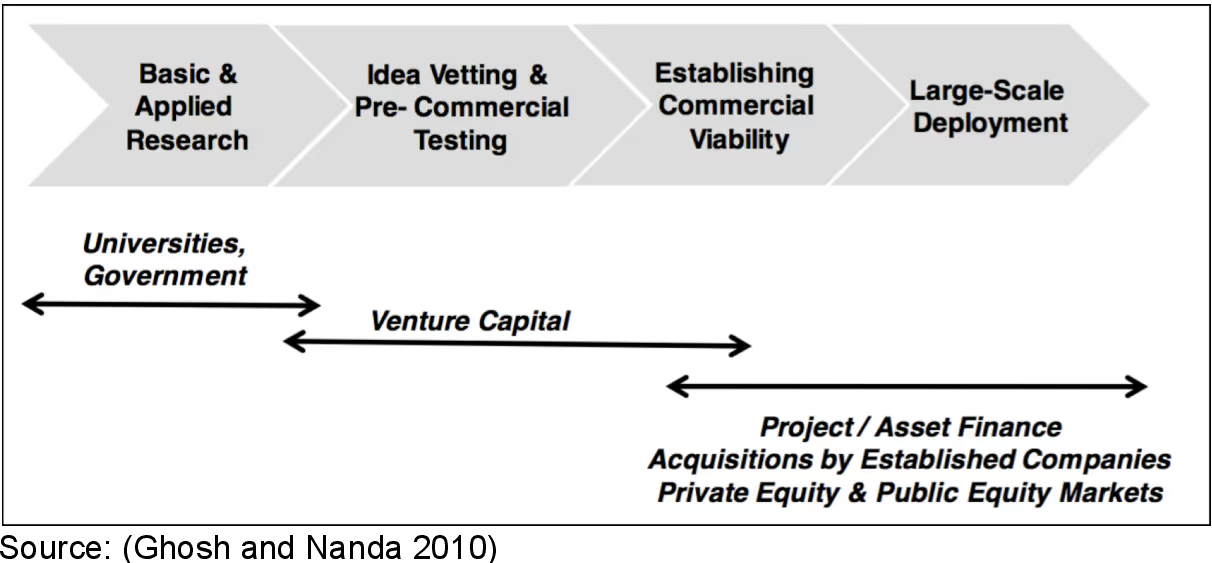

Read Time:
6
Minutes
Digital Transformation
October 27, 2025
Why Adoption is as Important as Technology
When it comes to innovation, finding ways to achieve real world success is key. It isn’t always just about the technology.
Here at Ntegra, we help our clients with Technological Innovation. We define Technological Innovation as applying new technologies in novel ways to gain advantage and protect from disruption. But how do you make sure your innovation efforts are effective? By understanding the dynamics of the technology lifecycle, you can learn to exploit technology better by adopting key behaviours to give you the advantage.
This means looking beyond the technology to gain an advantage. This is particularly true when “buying-in” innovation as there may not be as much of an advantage in the technology as you think and what advantage there is can easily be lost by poor adoption.
Understanding the limitations of “off the shelf innovation”
Seeking competitive advantage by buying innovation is buying time advantage. Nothing is stopping your competitors from buying the same technology. Advantage can still be gained by making your use of the technology more successful than your competitors. This could be by having strong business change discipline and by using the combined force of innovative technology and innovative process to gain competitive advantage. In short, adopt technology more quickly and more effectively.

The time advantage of adopting innovation early in the lifecycle is that your competitors are less likely too. However, there is a risk is that the technology provider cannot make a more extensive commercial success of the technology leaving you, the adopter, having to move to a different provider and losing time advantage as a result. From a technology provider point of view, this risk is often referred to as “Crossing the Chasm”, a phrase coined by Geoffrey Moore in 1991 in his book by the same title. It recognises the challenges that technology providers face when moving from the early adopter phase to the early majority phase of the Innovation Adoption Lifecycle. Venture Capitalists call this the Valley of Death. This happens when more investment is required to commercialise the offering while still at the early adopter stage.
“…technology can be copied in three months”
It is often thought that venture capitalists take on high risk with their investments; however, the highest risk has usually been taken before venture capital money is involved. Early-stage and seed finance for new technological developments are very often borne by the public sector. Only when R&D has produced something that is technically viable does venture capital money begin to come in to commercialise the offering. Venture capital funds do carry risk at an individual company level, but the risk is managed across a portfolio of companies.
Free-market venture capital waters down technology advantage
Speaking to many venture capital firms in Silicon Valley this year, there is a growing tendency for investment strategies to focus on early-stage companies with high growth potential as opposed to those that hold unique intellectual property. That is, they look for a company’s ability to gain market traction rather than hold any technological advantage. To quote one partner at a venture capital firm, “technology can be copied in three months”.
Stages of venture capital investment

When the innovation adoption lifecycle moves from pure research and development through to venture capital it self-selects the most commercially viable technologies. As we move along the adoption curve, any pure technology advantage lessens as the same offering has been adopted by more organisations. Early adoption carries higher risk but adopting later waters down the competitive impact that innovation can have for the organisation.
Not only do the investment strategies of venture capitals limit the potential competitive advantage of those organisations looking to adopt, but it also restricts how radical that innovation is. The successful companies receiving funding in subsequent investment rounds are those who have market traction, i.e. more of your competitors have adopted the technology or will adopt the technology.
Without investment back into co-ordinated high-risk R&D efforts, there is a danger that core technology innovation will slow down, ultimately impacting how truly innovative we are in the future.
We would ordinarily believe that a proportion of post venture capital investment profits are being channelled back into R&D. Deloitte recently released a report claiming that private sector R&D is now as much as government spending on R&D. What the report failed to acknowledge is the fact that big tech R&D budgets are predominately to drive the profitability of big tech companies, not to create new markets, drive growth across sectors and to innovate for the greater good.
Big tech R&D causes innovation to become distorted on three levels. Firstly, as described, innovation takes place prioritising their private profitability and market monopolisation. Secondly, the privatised profit creates a class of billionaire philanthropists promoting projects as altruistic causes without any joined-up strategy either at a national or international level. Thirdly, the privatised profits that enable this have been a direct result of the risks that the public sector took early in the R&D phase. Without investment back into co-ordinated high-risk R&D efforts, there is a danger that core technology innovation will slow down, ultimately impacting how truly innovative we are in the future.
The key behaviours for gaining competitive advantage from innovation
With a limited competitive advantage from the technology itself, in order to gain the maximum advantage from technology you have to adopt it better than your competitors. The most successful companies at innovation consistently follow these three behaviours:
- They research – Make sure you understand the technology market and trends. This will give you the insight to adopt at the right time. This is why we run research tours to Silicon Valley and European technology hubs. Nothing replaces immersing yourself among like-minded individuals and visiting venture capital firms, incubators, hubs and start-ups.
- They look for synergies – Having immersed yourself, how best can the technology be used in your organisation? Is there a combination of technology that can be used in a new way that will amplify your advantage?
- They use hard metrics – Use metrics to measure the quality of your innovation. How many initiatives have you started, how many made go live and most importantly how many have made a real word difference?
By outperforming your competitors with these behaviours, you will see a rise in the quality of your innovation, and some may even make it to be real world successes.
Want to find out how Ntegra can help with your Technology Adoption? Contact Us.
If you enjoyed this blog post, explore these related topics from Ntegra's Blog Hub for deep insights, industry trends, and thought leadership. Our curated content navigates the ever-evolving landscape of technology, innovation, and business strategy.
The Role of the Discovery Phase in Agile Software Development
Product Led Growth is the De Facto Strategy and Operating Model
How Do You Maximise Innovation Within Large Enterprises?
The Benefits of Prototyping and Why You Should Be Doing It
A Deeper Dive into the Evolving Landscape of Cloud Technology
Venture Capital and Corporate Innovation - A Point of View From Mayfield Fund
The Future Of Israel’s Technology Economy
The Story Of The Israel Start-up Nation

